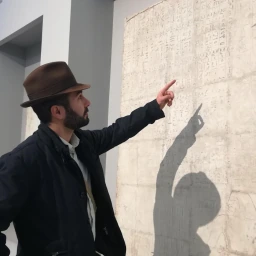According to the popular tradition, the little church of Saint Peter in Gemonio was founded by the Lombard queen Theodelinda. Additionally, it would have been entrusted to the monks of San Pietro in Ciel d’Oro in Pavia by the king Liutprand. However, there are no historical sources that might confirm this thesis.

Anyway, the church has an ancient history, although it is largely forgotten. Saint Peter’s walls preserve traces of a past still to be discovered.
Historical hints
Originally, the church had a single aisle and was erected on a pre-existing Longobard building. It is not so clear when a chapel was first constructed on the site, but it could have dated back to the Liutprand age (8th century). At the end of the 10th century the church of Saint Peter in Gemonio was extensively modified, giving it a Romanesque appearance1; an aisle was added. Instead, the third aisle on the right side was built in the 15th century. The 11th century massive bell tower is characterized by arched window openings and embrasures.

Wall paintings in the church of Saint Peter in Gemonio
Internally the church of Saint Peter in Gemonio is decorated with wonderful wall paintings. The restorers got surprised when they removed the earliest plaster layer and brilliant colours appeared.

It was found that the building had been transformed into a hospital during the plague epidemic of 1631 and the walls were whitewashed with lime. The restoration works lasted fifty years and permitted us to admire the wonderful wall decorations. The paintings were realized in different periods of time but they appear as a unique representative corpus.
So, the Medieval frescoes (10th-11th century) on the left wall and the Renaissance ones have the same figurative subjects. In making a stylistic comparison, the visitor can follow an ideal path in art history.

Frescoes of the apse
The 15th-century frescoes in the central apse are the most beautiful of the entire church. In the upper portion of the painting, God the Father is depicted holding a book (the Sacred Scriptures) in his left hand and makes a gesture of blessing with his right hand. On his sides there are the four Doctors of the Church: St. Gregory, St. Jerome, St. Augustine and St. Ambrose. In the lower part of the fresco the eleven apostles, Saint Paul and Saint John the Baptist are depicted.


The authors of the wall paintings are unknown. Probably they were local Lombard workers.


A mysterious altar
In addition to the wonderful sacred paintings, that had been hidden under a plaster layer, the church of Saint Peter in Gemonio kept an extraordinary secret. During the restoration works of the 60s, the archaeologists removed the Baroque wooden altar. Surprisingly, they discovered a pre-existing structure made with a plastered composed material. It is a curious fact that the inhabitants had told for centuries there were secrets passages under the altar, which would have led to the fortified tower of the town (nowadays in the village of Cocquio Trevisago). These tellings contained a portion of truth. In fact, the legendary tunnels were the ossuaries used for burying the dead during the plague epidemic in 1631.

No one could have imagined to find there the ancient altar of the church. Even, a great surprise occurred when the presence of some enigmatic red symbols was revealed.
Symbols of the altar in Saint Peter in Gemonio
There are several depicted symbols over the Saint Peter’s altar in Gemonio. The scholars had many difficulties in understanding their meaning. They have just identified four hexapetal flowers, called “flowers of life“, so the whole symbolism of the altar is not still clear.

However, the two painted “ladders” on the sides could suggest the presence of tombs, probably dating to the Longobard period. They could symbolize the ascent of the deceased to the heavens and towards God. This hypothesis can be supported by the significance of the flower of life. It is a representation of the daffodil that is spread all over the Alpine area and is the first that blooms in spring. So the flower of life has been a symbol of resurrection since the Early Christian period.
Samuele Corrente Naso
Notes
- M. Magni, Romanesque architecture of Como, Milano, 1960. ↩︎


